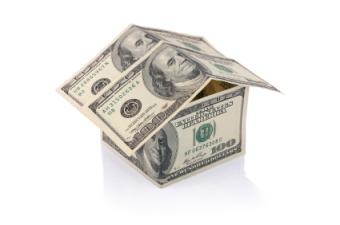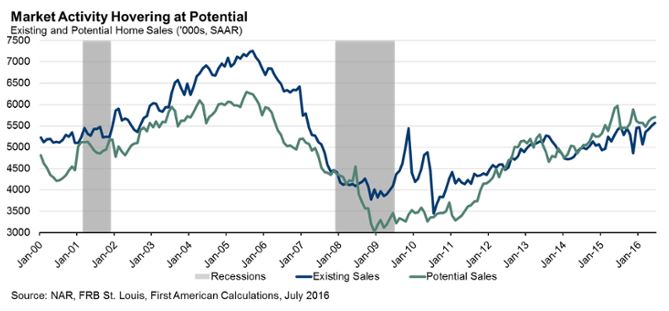 Housing in the United States is currently experiencing several positives, which have allowed the market to market to come close to its potential, according to data released Monday by First American Financial Corporation.
Housing in the United States is currently experiencing several positives, which have allowed the market to market to come close to its potential, according to data released Monday by First American Financial Corporation.
The First American Potential Home Sales Model reported gains in existing-home sales for the third straight month in July, which, combined with low interest rates, job and wage growth, and expanded credit availability has increased consumers’ confidence in the U.S. housing market.
Existing-home sales rose in June for the third consecutive month up to an annual rate of 5.57 million, which was an increase of 1.1 percent over-the-month and 3.1 percent over-the-year, bringing existing-home sales back up near early 2000s levels.
“Mortgage rates have continued to move lower, absorbing the impact of rising prices and giving consumers increased leverage and buoyed house-buying power,” First American Chief Economist Mark Fleming said. “The average rate for a 30-year, fixed-rate mortgage fell further in July, dropping to 3.44 percent from 3.57 percent in June. Except for a brief four-month period between October 2012 and January 2013, this marks the lowest mortgage rates have been since Freddie Mac began tracking mortgage rates in 1971,” said Fleming. “Global economic uncertainty and negative yields on government bonds overseas continue to drive demand for U.S. Treasuries, including the 10-year Treasury note, driving down yields and keeping mortgage rates low for U.S. consumers for the foreseeable future.”
In spite of the low mortgage rate environment and the recent increases in existing-home sales, First American’s Potential Home Sales Model for July shows that existing-home sales are slightly falling short of their potential by 1.3 percent, which computes to about 92,000 in annual sales. The underperformance gap narrowed from June’s rate of 1.8 percent, or 104,000 in annual sales.
First American reported an increase from June to July of 0.15 percent in market potential for existing-home sales, which computes to 8,000 in sales (an increase of 5.4 percent from July 2015). Overall, the market potential is nearly 90 percent higher than its low point reached in December 2008 at the depth of the crisis. The market potential for existing-home sales is still lower than its pre-recession peak by about 7.6 percent (about 433,000) from July 2005, according to First American.
“Low inventories still remain an issue, dropping to a 4.6-month supply, down from the 4.7-month supply seen in April and May, and from the 4.9-month supply of June 2015,” Fleming said. “The constrained supply in this sellers’ market continues to frustrate potential homebuyers and adds further upward pressure to nominal home prices, which rose an estimated 5 percent year-over-year in May, according to the Case-Shiller House Price Index. While nominal price growth remains strong, prices adjusted for the impact of income and interest rate changes on consumer house-buying power remain historically very low.”
This did not stop consumers from having a positive attitude toward housing, however.
“The Fannie Mae Home Purchase Sentiment Index reached a new high in July, up 3.3 points from June to 86.5, with large gains in consumers’ expectations for lower rates and continued house price growth,” Fleming said. “The survey also showed a growing number of consumers leaning towards purchasing rather than renting if they were to relocate. There was also a notable and similarly positive shift in sentiment amongst younger households.”
Click here for full details on First American’s report for July.
